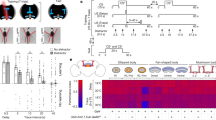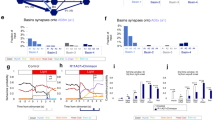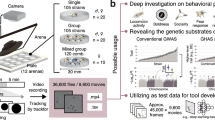Abstract
IF it could be demonstrated that Drosophila are able to learn, then our extensive knowledge of the genetics of this dipteran could be applied to understanding the biological bases of learning. Reports of learning in Drosophila1–3 sometimes involve changes in orientation as the result of aversive stimulation, for example, electric shock. The use of these stimuli can bring additional problems such as conditioned inhibition where the animals cease responding altogether4. The present paper is the first report of work on a unique learning situation which is based on the well-known mazes used to study taxes in Drosophila5 and involves no aversive stimulation.
This is a preview of subscription content, access via your institution
Access options
Subscribe to this journal
Receive 51 print issues and online access
$199.00 per year
only $3.90 per issue
Buy this article
- Purchase on SpringerLink
- Instant access to full article PDF
Prices may be subject to local taxes which are calculated during checkout
Similar content being viewed by others
References
Murphey, R. M., Anim. Behav., 15, 153–161 (1967).
Spatz, H. Ch., Emmans, A., and Reichert, H., Nature, 248, 359–361 (1974).
Quinn, W. G., Harris, W. A., and Benzer, S., Proc. natn. Acad. Sci. U.S.A., 71, 708–712 (1974).
McConnell, J. V., A. Rev. Physiol., 28, 107–136 (1966).
Hirsch, J., J. comp. physiol. Psychol., 52, 304–308 (1959).
Parsons, P. A., Theor. appl. Genet., 40, 337–340 (1970).
Hay, D. A., Experientia, 28, 922 (1972).
Murphey, R. M., J. comp. physiol. Psychol., 60, 196–199 (1965).
Putnam, C. D., Anim. Behav., 10, 118–125 (1962).
Jensen, D. D., Behaviour, 15, 82–122 (1959).
Walton, P. D., J. comp. physiol. Psychol., 65, 186–190 (1968).
Dingle, H., Anim. Behav., 13, 171–177 (1965).
Murphey, R. M., Anim. Behav., 21, 687–690 (1973).
Thorpe, W. H., Learning and Instinct in Animals, second ed. (Methuen, London, 1963).
Yeatman, F. R., and Hirsch, J., Anim. Behav., 19, 454–462 (1971).
Author information
Authors and Affiliations
Rights and permissions
About this article
Cite this article
HAY, D. Strain differences in maze-learning ability of Drosophila melanogaster. Nature 257, 44–46 (1975). https://doi.org/10.1038/257044a0
Received:
Accepted:
Published:
Issue date:
DOI: https://doi.org/10.1038/257044a0
This article is cited by
-
Maze Navigation and Route Memorization by Worker Bumblebees (Bombus impatiens (Cresson) (Hymenoptera: Apidae)
Journal of Insect Behavior (2015)
-
Olfactory responses to alcohols by adults of sympatric populations ofDrosophila melanogaster andDrosophila simulans
Behavior Genetics (1984)
-
Learning in three species of diptera: The blow flyPhormia regina, the fruit flyDrosophila melanogaster, and the house flyMusca domestica
Behavior Genetics (1984)
-
Drosophila Learning: Behavior and biochemistry
Behavior Genetics (1984)
-
A comparative study of twoDrosophila learning tasks
Behavior Genetics (1983)



